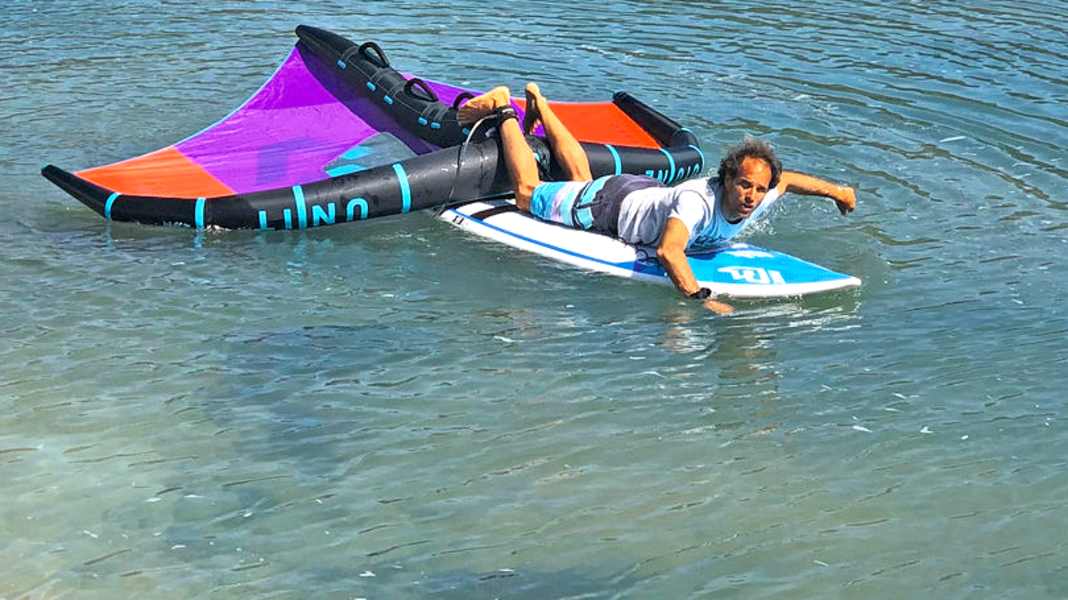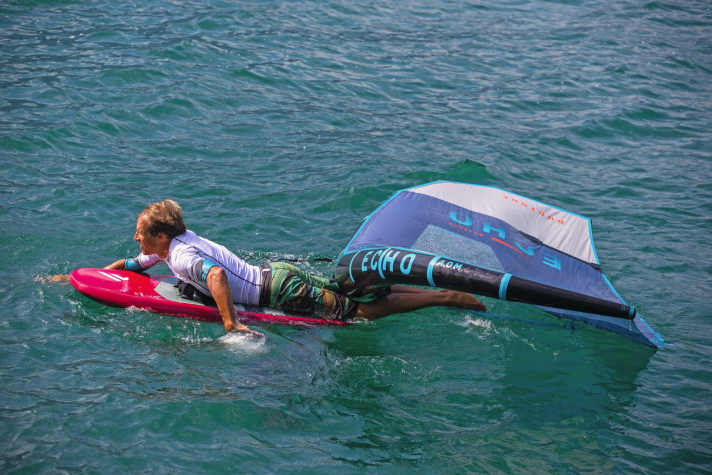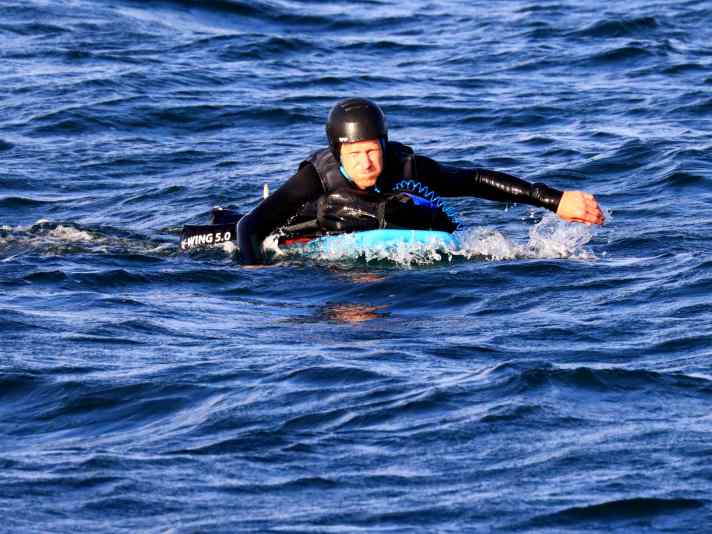
As with kitesurfing or windsurfing, anyone learning to wingfoil is usually unable to maintain height at the beginning. With every fall and the subsequent attempts to restart, the wind inevitably pushes you downwind. That's why it's important to look for an area for the start where the wind is not blowing offshore. In any case, you should know how paddling with the wing works, because even as an experienced winger it can happen that the wind simply dies or you have a material problem, such as a burst front tube on the wing.
On a SUP or longboard turn the wing upside down and place it on the tail of your board. Lie on your stomach on the board and place your feet on the front tube to prevent the wind from blowing the wing off the board. Now you can paddle quickly into the wind.

Paddling is somewhat more arduous on short foil boards. You must also secure the wing against flying away when paddling. Removing the leash from your wrist and attaching it to the strap on the board makes paddling easier, but is not without risk. Alternatively, you can just loosen the leash and move it to your upper arm if it is holding you back too much at the wrist. Again, lie on your stomach on the board and pull the wing onto your legs with the front tube so that it doesn't hang too much in the water and slow you down.
The paddling technique presented works primarily for paddling directly into the wind. Paddling crosswind is often a difficult endeavour. It can also happen that the front tube of the wing bursts in the event of a fall. To prevent it from dragging behind you like a giant drift anchor, you must first deflate it completely. Sit on the board, open the valves and crimp the wing together from the wingtips. You can now place the bundle on the deck and lie down on it to paddle. This way, the wing won't brake too hard and won't get lost.

Savety Tip: If you can't make it back to windward under your own power, always stay with the equipment - here you will be seen and have a safe life raft. To avoid drifting away quickly, the wing should then remain in the water. Draw attention to yourself by waving and giving the distress signal - stretch your arms out to the side and cross them over your head.
You will also regularly find many more tips and tricks on the topics of safety and riding technique HERE.
